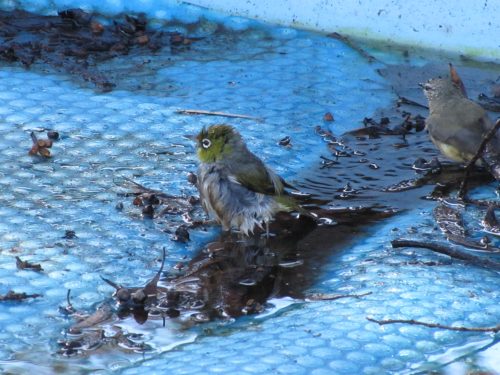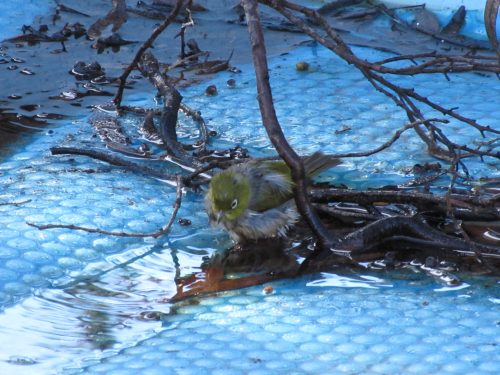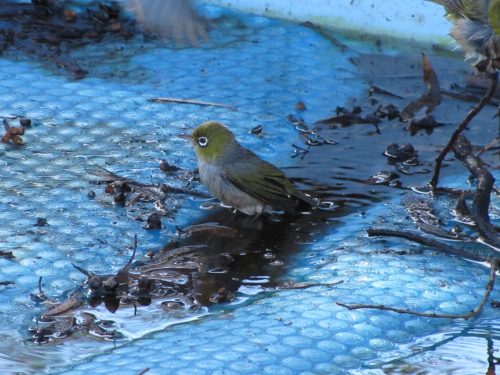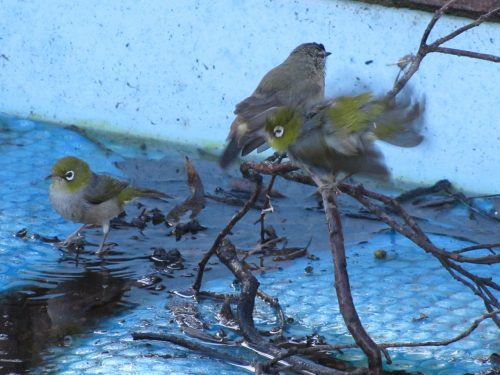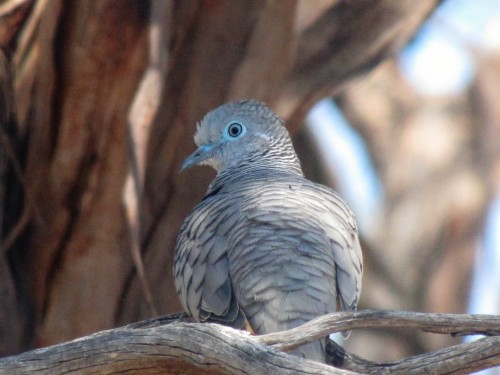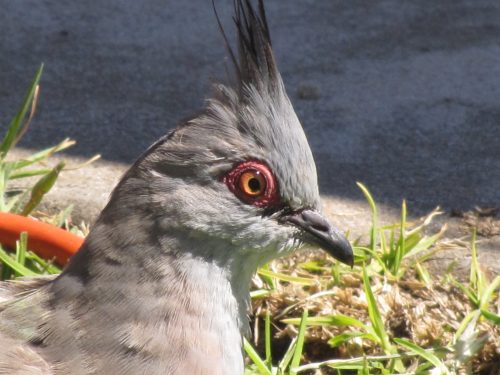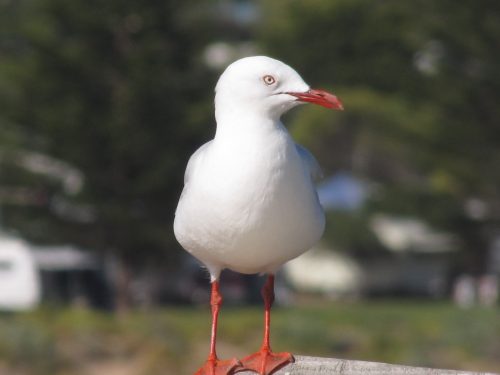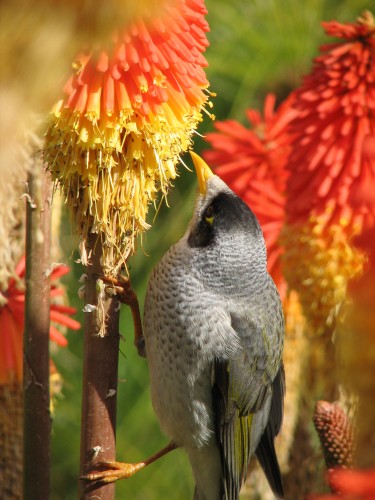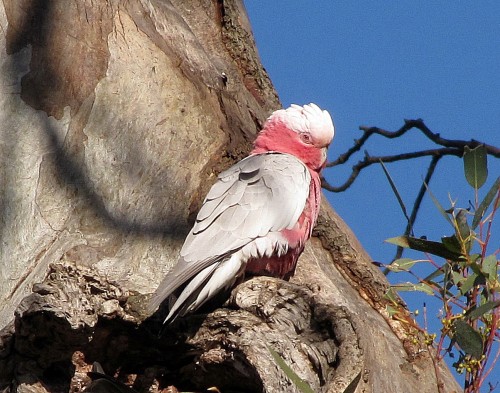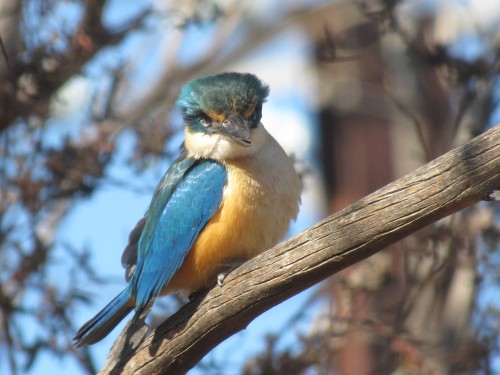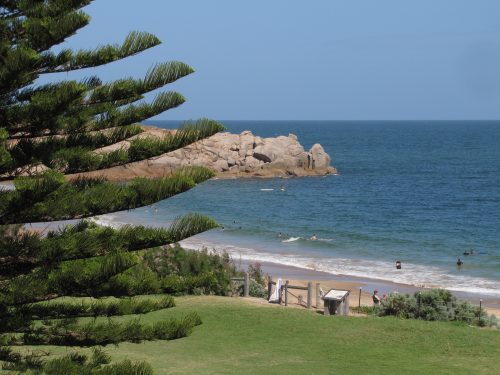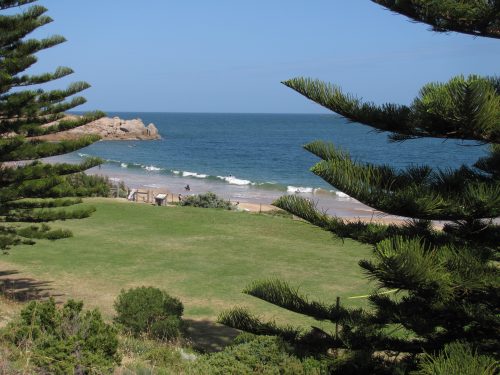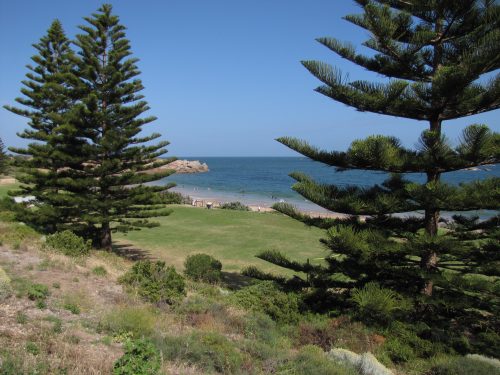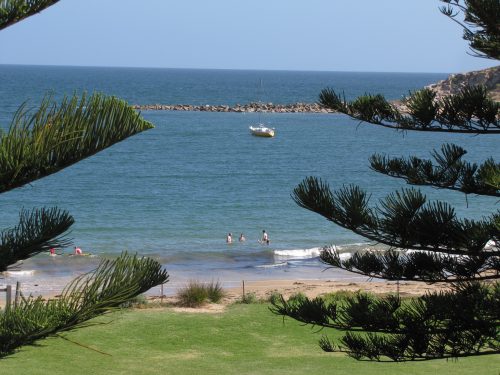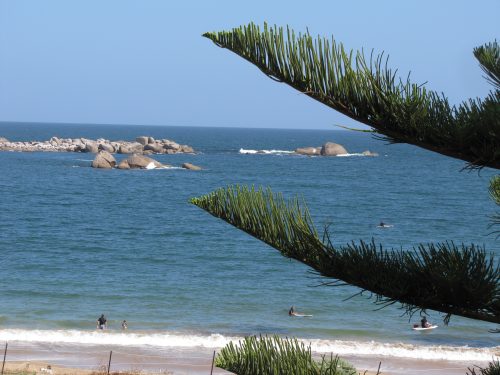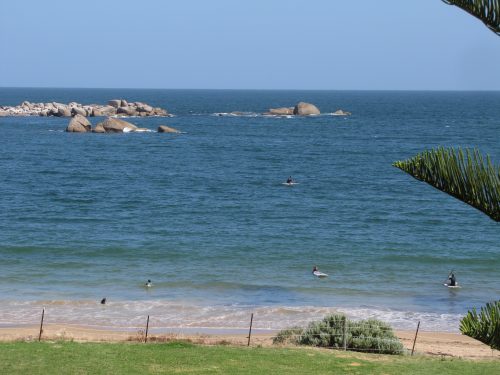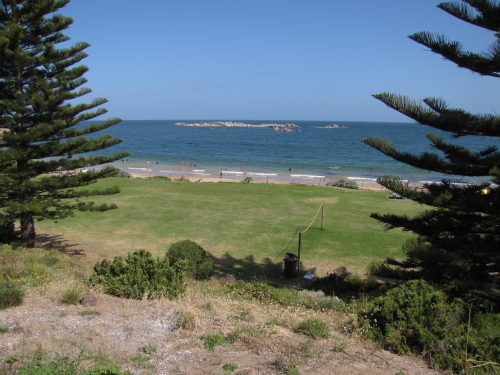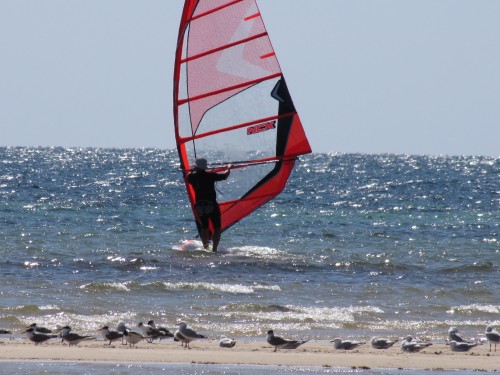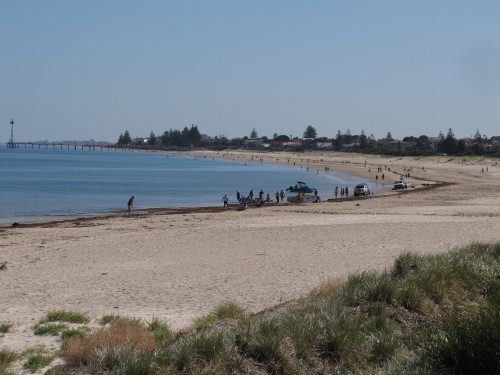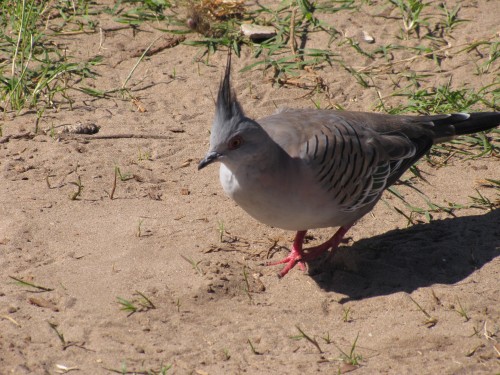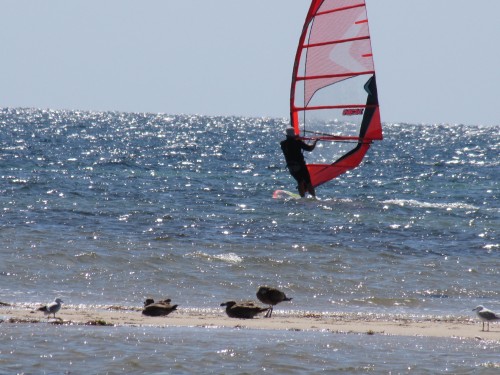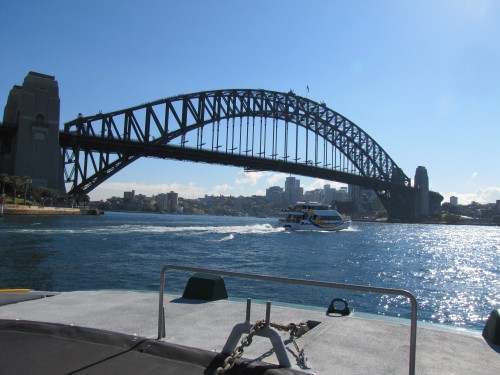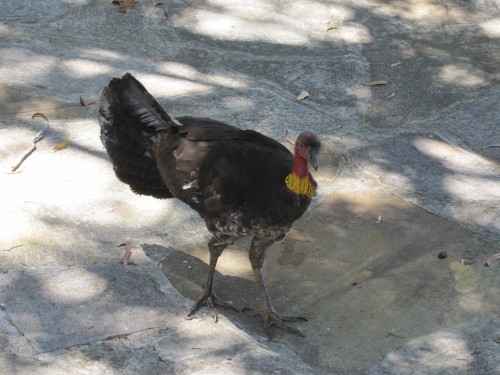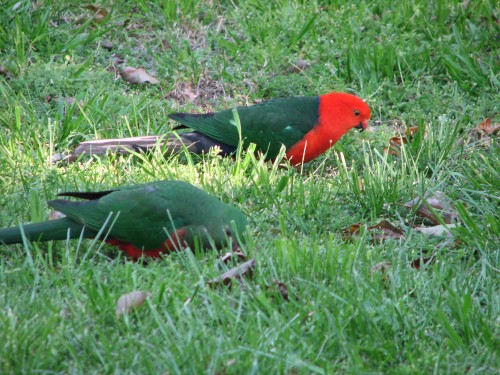Silvereyes come for a bath
In my last article here I posted some photos of Yellow-rumped Thornbills bathing in the small pools of water which gather after rain on our swimming pool solar blanket. On the same day, a small number of Silvereyes also came for a drink and to bathe. I have shown these in today’s post.
Our swimming pool is in our backyard, a short distance from our back veranda. On nice sunny days when it is not too hot in the middle of summer, or not too cold in the middle of winter, we enjoy sitting on the veranda to have our lunch. Sometimes we take a mid-morning break there for a cup of tea or coffee. We have also taken an afternoon break when gardening.
On all of these occasions, we enjoy the constant parade of birds in our garden, perched on the fence or in the trees nearby, and on the pool cover like the Silvereyes shown today. I often have my binoculars and camera at the ready while we sit there. On this occasion, I managed to get many photos of the Silvereyes and the Yellow-rumped Thornbills. A Grey Fantail was also fluttering around, but you will have to return in a few days’ time to see those photos in my next post.
The water that gathers on our swimming pool cover in the winter and spring months are visited by many birds over the course of each day. In addition to the species I have already mentioned, another frequent visitor is the Magpie Lark. Both the male and the female come on a daily basis, often perching on the pool safety fence and calling loudly, their antiphonal singing a delight to hear. (Antiphonal: when the two birds sing a duet in parts.)
Our resident Australian White-backed Magpies also come to drink, and the bossy Red Wattlebirds will chase the smaller birds off. White-plumed Honeyeaters flit in and out nervously, while the Peaceful Doves take their time, gradually getting closer and closer until they gather the courage to stoop and drink. The Crested Pigeons also come for a drink, though they are usually more interested in mating displays than drinking.
The Welcome Swallows occasionally swoop low over the pool but more often they are seen much higher in the air. The many House Sparrows and Common Starlings come frequently to drink and bathe, but the resident Mallee Ringnecks rarely do so; they prefer to feed in the nearby trees. The Willie Wagtails, however, are frequent visitors to this part of the garden.
As you can see, it is never boring in our garden if you are a birder like myself.
Good birding,
Trevor
PS: Over the years, I have written articles about all of the birds mentioned in this article. To see photos of them, and to read more about each of them, use the search facility in the top right-hand corner of any page.
Happy 12th Birthday to Trevor’s Birding
Happy Birthday!
Today marks the 12th anniversary of Trevor’s Birding.
It is hard to imagine that 12 years have passed since I started on this amazing journey. I had no idea at the time where it would take me.
Oh, the places I’ve been,
And the birds I have seen,
From the parrots and doves,
And the eagles above.
To ravens and crows
And finches in rows,
The lorikeets too
And kingfishers blue –
I’ve noted them all
Both big and so small.
My camera has taken
A wide range of birds,
Shown here on this blog
Along with my words.
Yes – I’ve been birding in many places on four continents and in seven countries: Australia, Thailand, Nepal, Ethiopia, Morocco, Spain and Malaysia. Many of the photos taken have been shared here on this site. I hope there will be many more in the years to come.
I have written over 1750 articles over those years and I am planning far more in the years to come. I have no idea how many photos I have taken, nor how many I have shared here on this site. I know that I have taken well over 10,000 photos on my camera. I estimate that I have probably shown about 4000 of them here.
On the strength of what I have written here and the photos I have shared, I have had many requests by various groups to be a guest speaker about birds. This is something I really enjoy and hope to do more of in the years to come.
Instead of writing about a particular bird today, I am going to finish this article by posting some of my favourite photos.
Enjoy.
Birds of Horseshoe Bay at Pt Elliot
Last week I wrote about a trip I took with my wife to celebrate our anniversary. We travelled from Murray Bridge to Victor Harbor which is just over an hour’s drive south-west from home. Along the way, we stopped at Milang, then at Goolwa, followed by an exploration of Hindmarsh Island, on to Pt Elliot and ended up having dinner at a favourite restaurant in Victor Harbor. While the day-trip was meant as a day out for relaxation, I had plenty of opportunities to do some casual birding wherever we stopped.
Pt Elliot is a lovely town of around 2000 population which swells in number during our long, hot summers. It is located on the south coast of the Fleurieu Peninsula and was established as a port in 1851. It boasts the reputation of having Australia’s first public railway line which extended from Goolwa. This railway line provided a means to carry cargo to and from the riverboat trade on the Murray River to seagoing ships. The mouth of the Murray River was considered too treacherous to navigate. The railway line is still in operation, though now it only carries tourists.
Pt Elliot has a delightful, and quite safe, little beach known as Horseshoe Bay. On our visit, it was very crowded despite the cool breeze. The local lawn bowls club is right next to the beach, and adjacent to the Flying Fish restaurant, known widely for its excellent seafood menu. The local caravan park just around the bay a little is very popular in the summer months.
The birdlife here is a mixture of land birds and coastal birds. Of the coastal birds, I was not able to identify many on this visit. On Pullen Island out in the bay, I could see hundreds of Silver Gulls and several Pacific Gulls. A small group of Little Pied Cormorants rested on the rocks while the occasional Whiskered Tern, Crested Tern or Caspian Tern flew overhead. On the islands, I am sure that there were a few terns as well, though my binoculars were not strong enough for me to be certain.
Away from the water, the Singing Honeyeater is a common bird of the coastal dunes and nearby bushes. Crested Pigeons can be seen throughout the town, often perched on rooftops or television antennae. Small flocks of Galahs and Little Corellas flew overhead. More frequently encountered are the Rainbow Lorikeets, either screeching as they fly low overhead, or noisily feeding on any flowering tree of bush in the gardens nearby. The lawns were attractive to the Australian Magpies, their keen eyes on the lookout for beetles, worms and other tasty morsels.
Further reading:
- Readers can go to further articles about some of the birds and places mentioned in the text by clicking on the links in blue.
Birding at Brighton Beach
A few weeks ago my wife was attending a convention in the southern parts of Adelaide in South Australia. This is an annual event and we usually go with several other couples, staying in our caravans. Previously this convention was always held in Victor Harbor on the south coast. This year the venue changed to a suburb in Adelaide, so we changed our destination for the weekend to the Brighton Caravan Park. We had never been there before and we were very pleasantly surprised. A nice clean park with new facilities and many new cabins. The van site we had included a cement slab. Our van was a mere twenty steps from the toilets and showers.
Always on these special weekends, I look forward to doing some birding. This can take place at any time during the day while the men are lounging around, eating and drinking tea or coffee, nibbling on biscuits and solving the world’s problems. Well… having an opiinion on world matters.
My plans briefly went astray from the first minute after we had pulled up at the entrance. When I entered the office to check in, the caravan park staff were in a mild state of panic. One of the employees had accidently run over an elderly lady staying in one of the park cabins. She had a cut under one eye from where she hit her face on her glasses, and she was quite shaken. As it turned out, her friend took her to a nearby hospital and I spoke to her the next day. She had recovered well from the experience, though she had a nasty looking black eye. The worker who had backed into her bought her some lovely flowers.
After this small amount of excitement, I checked in and then set up the caravan and annex ready for a few days of relaxation. On Saturday morning, the men in our group of friends sat at the edge of the park overlooking the beach. We were entertained by the local sailing club having a small regatta almost right in front of us. Most of the sailors were juniors and several boats tipped over as the sea breeze stiffened a little.
We enjoyed chatting, drinking our coffee while I did a little casual birding. There were plenty of Silver Gulls and Crested Terns flying past, along with occasional Pacific Gulls and Cormorants. Several Willie Wagtails flittered around on the lawn and nearby low bushes covering the low sand dunes. I could also hear Red Wattlebirds and Rainbow Lorikeets in nearby bushes. We were amused and entertained by the numerous Crested Pigeons feeding on the grass, chasing one another and displaying their feathers.
I will write more about this visit in my next post in a few days’ time.
Good birding.
Trevor.
Birding with my grandchildren
I am currently staying with my son and family in Artarmon which is on the North Shore area of Sydney. They live just a few train station stops north of Sydney Harbour Bridge. Only last evening we drove over the bridge, something my son and grandson do every week but it is something special for me. I get to do it only once or twice a year.
Living in Murray Bridge in South Australia, we only get over to Sydney once or twice annually. Because it is over 1300km to drive, a journey which takes two whole days to complete, we only get over here frequently. My son and his family only come over to South Australia once every second year, mainly due to both work commitments and the restrictions of the school year.
While in Artarmon I get few opportunities to go out birding. There are some great birding spots within an hour’s drive or even closer. Lane Cove National Park, for example, is only a ten-minute drive away. Getting away from family is quite difficult, especially seeing our visits usually coincide with school holidays. The grandchildren, ages 7 and 4, are very reluctant to let us leave home, and our car is not set up for young children. On the plus side, even at their tender age they have become aware of the birds they see in their garden, as well as any seen while visiting local parks.
Birding in Artarmon
While we are here the majority of my birding is done from their garden. Fortunately, the neighbourhood has plenty of vegetation, including many large eucalypt trees.
Over the last week I have observed the following birds:
- Rainbow Lorikeets: very common, present in large numbers.
- Australian Ravens: very common, I often see small groups of up to 5 or 6 flying overhead.
- Pied Currawongs: very common, and very noisy – they call throughout the day.
- Laughing Kookaburras: more often heard calling than seen.
- Grey Butcherbirds: common and sometimes very vocal.
- Noisy Miners: this species is the dominant native honeyeater in this area. Very common in large numbers.
- Common Myna: an introduced pest species, becoming more dominant as the years go by.
- Welcome Swallow: common but not seen every day.
- Crested Pigeons: present in small numbers, rarely more than about 4 or 5 in any one location.
- Sulphur-crested Cockatoos: often seen or heard flying overhead, sometimes in flocks up to 40 or 50.
- Rock Doves: not seen regularly in or from the garden, but present in large numbers near the local shops.
- Australian Brush-turkey: I haven’t seen this large bird in or near the garden, but my grandson reports that he often sees one or two in his playground, just under 1km from his home.
Other species not yet seen or heard on this visit, but have been seen during past visits include:
- Tawny Frogmouth
- Galah
- Australian King Parrot
- Australian Magpie
- Willie Wagtail
- Common Blackbird
- Common Starling
- Magpie Lark
